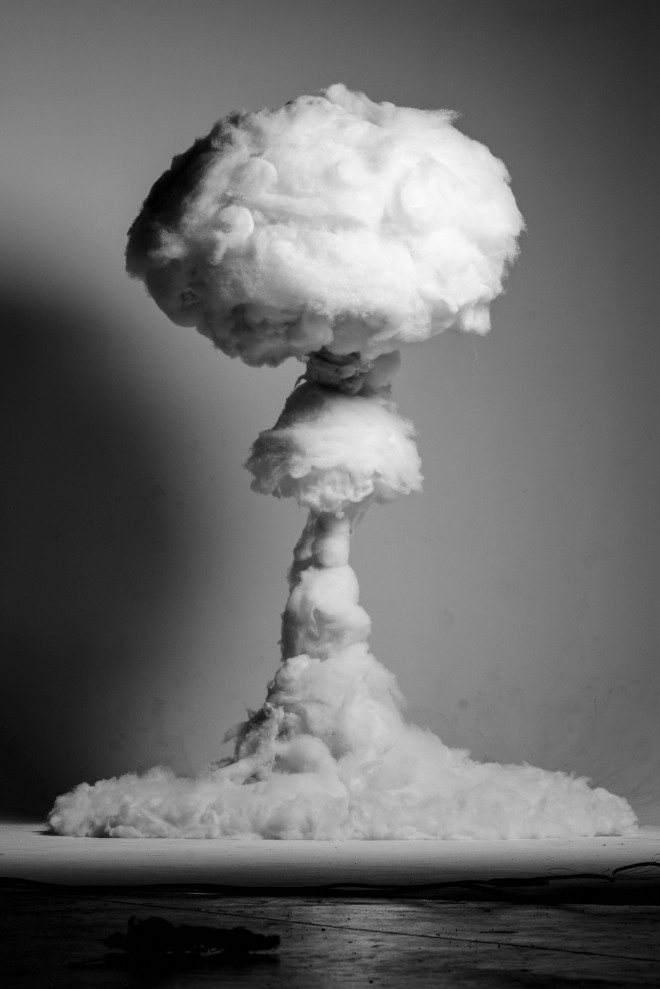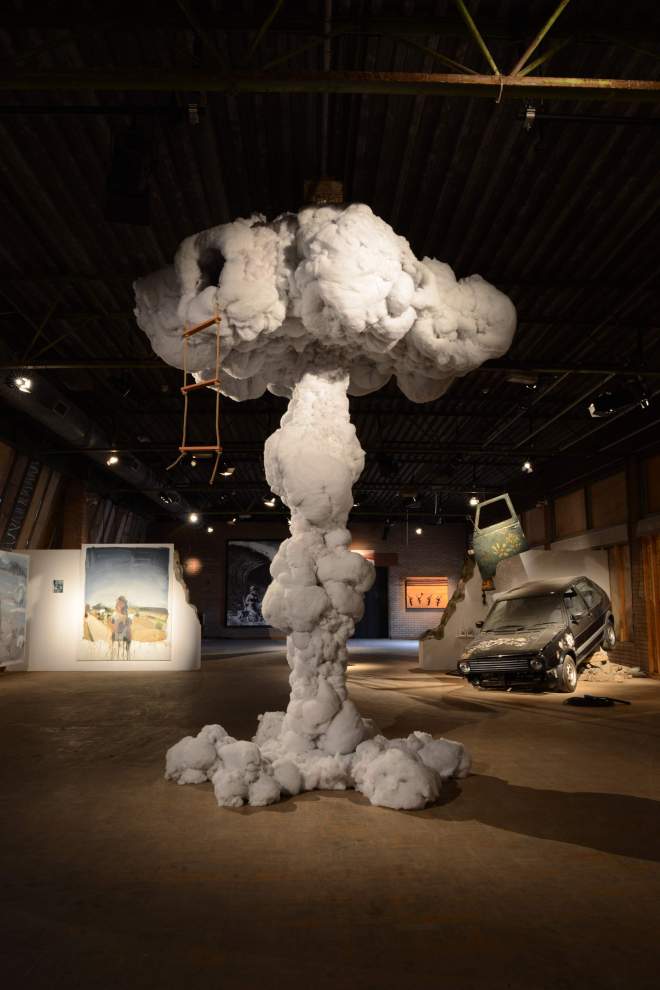My goal is to create awareness about Nuclear Weapons continuing to be an existential threat, as well as inciting visual conversations about nuclear weapons, which force the viewer to think about nuclear weapons, question what role they believe they should play in our society, and whether their continued existence in our world is either justifiable or necessary.

Today, the doomsday clock is set at 3 minutes to midnight. To put that in context, the doomsday clock in 1963, in the middle of the cold war, was set at 12 Minutes to midnight. The threat posed by Nuclear Weapons has not disappeared or dissipated. There are still over 15,000 Nuclear Weapons in the world, and they still remain as the greatest single threat for the immediate destruction of humanity and life itself. And even more frightening than that, is the apathy that the general public now holds for nuclear weapons.

The above graph (Fig 1) shows the decline in participation in Anti-Nuclear movements, and shows how the participation in Anti-Nuclear Movements is the lowest it has ever been since the creation of Nuclear Weapons. The author of the Journal Piece for the bulletin of Nuclear Scientists states in his article;
Just because ordinary citizens have decided to put the problem of nuclear weapons out of their minds doesn’t mean that the danger no longer exists. Nuclear weapons remain the gravest threat of sudden catastrophe that we face. (Ward, 58)
Nuclear Weapons are still a massive threat, and contentious issue. There needs to be “visual discussion” (Mirzoeff 277) about Nuclear Weapons, where we can all come together, and discuss where our future lies, with or without nuclear weapons. Which is what I have attempted to convey through my creative work.
Mirzoeff in his text How to see the World urges the reader to become a visual activist, to “visually communicate and inspire change about global issues by utilising visual culture”(Mirzoeff 285). I have researched examples of artists that have looked at the global issue of nuclear weapons and explored it through a visual form, which has then gone on to incite visual conversations, such as Dietrich Wegner’s “Playhouse”as well as Anna Burns and Michael Bodaim’s “Silent but Violent” photography and sculpture series. Both of these artists I have explored more in depth in my previous blog posts.
What I’ve also discussed in my previous blog posts is the fact that Nuclear Weapons are not a black and white issue. It’s an incredibly complex issues and presents one of the greatest moral conundrums of the last 70 years. The issue is that no one is talking about them. We as a society are not discussing Nuclear Weapons, rather just ignoring them and leaving the decisions in the hands of big governments around the world. What I hope to achieve with my creative work is to bring awareness and incite discussion about Nuclear Weapons through the use of visual means, and in my case, the use of Photography and Sculpture.
So in order to create awareness and incite discussion about nuclear weapons I have created a 2.5 Metre high sculpture of a Mushroom Cloud that I have titled “Shadow of the Bomb”. The sculpture is made out of Polyester stuffing, a tree shaped lamp with branches that at the top, wire mesh, and narrow gauge wire, I have shown some images of me making the sculpture in my previous blog post.
To capture the audiences attention, incite discussion, and promote awareness about Nuclear Weapons I have utilised the powerful symbol of the mushroom cloud in order to provoke an emotional reaction from my audience, as Mushroom clouds have come to be associated with nuclear weapons and convey the sense of dread and immense power that they have. I chose this over other nuclear symbols such as the infamous Radiation hazard symbol as the Mushroom cloud represents nuclear weapons specifically rather than Nuclear technology as a whole, as well as representing the absolute worst case scenario when it comes to nuclear weapon, which is an actual nuclear detonation. I also opted to make the mushroom cloud sculpture as realistic as possible, compared to other artists such as Anna Burns and Michael Bodaim who made there mushroom cloud series out of household materials that presented a more abstract image. I feel as a more realistic approach forces the viewer to confront the actual realities of nuclear weapons and think about the power that nuclear weapons hold both in the physical sense, and the power that they hold over us as a species.
For the photography aspect of the piece I used a single light source to stand in place of the sun. This gave me complete control over the light, as well as casting realistic and deep looking shadows that made the piece look more realistic than if I had used multiple light sources. I tried a variety of different angles and focal lengths in order to get a better sense of the 3D object through a 2D medium.
Overall I feel as if my creative work ended up very similar to how I envisioned it. In future I may come back on this idea as I am passionate about the issue and feel as if there is room to further explore with this particular medium, such as integrating people into the photographs, or setting up the sculpture in a more public place to reach a wider audience. For now however I feel as if my creative work makes the audience think about nuclear weapons, and reminds them that they are still a global issue that requires more discussion. Below are some of the photographs that I took of my final creative work.

Shorrock, Daniel. “Shadow of the Bomb”. Sculpture, Photography. 2016.
References
Web
“Arms Control Association.” Nuclear Weapons: Who Has What at a Glance. N.p., n.d. Web. 07 June 2016.
Doomsday Clock. Bulletin of the Atomic Scientists., n.d. Web. 4 June 2016.
Mirzoeff, Nicholas. “Changing the World”. How to See the World. London: Pelican, 2015. Print.
Academic
Wilson, Ward. “Why are there no big nuke protests?”. Bulletin of the Atomic Scientists Vol 71 (2015). 58. Web. 8 June. 2016.

















